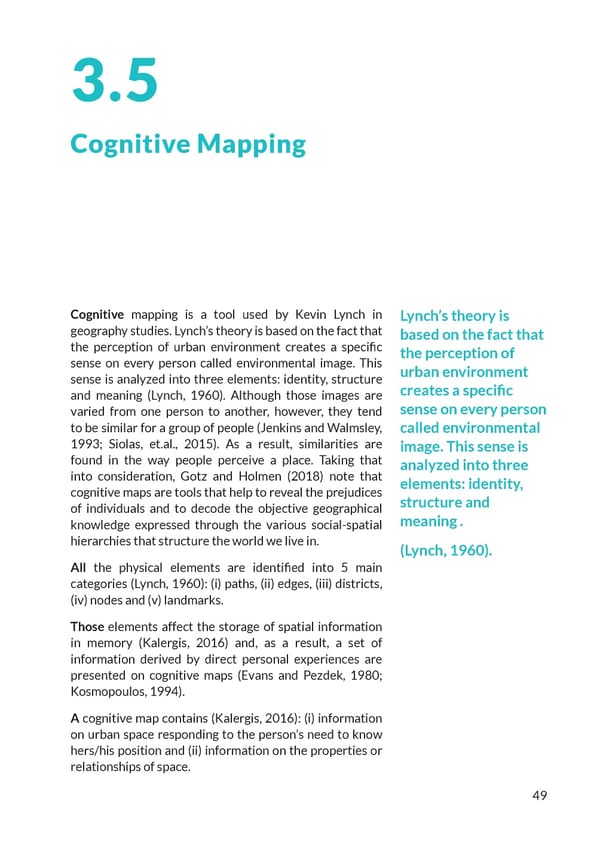3.5 Cognitive Mapping Cognitive mapping is a tool used by Kevin Lynch in Lynch’s theory is geography studies. Lynch’s theory is based on the fact that based on the fact that the perception of urban environment creates a specific the perception of sense on every person called environmental image. This urban environment sense is analyzed into three elements: identity, structure creates a specific and meaning (Lynch, 1960). Although those images are varied from one person to another, however, they tend sense on every person to be similar for a group of people (Jenkins and Walmsley, called environmental 1993; Siolas, et.al., 2015). As a result, similarities are image. This sense is found in the way people perceive a place. Taking that analyzed into three into consideration, Gotz and Holmen (2018) note that elements: identity, cognitive maps are tools that help to reveal the prejudices structure and of individuals and to decode the objective geographical knowledge expressed through the various social-spatial meaning . hierarchies that structure the world we live in. (Lynch, 1960). All the physical elements are identified into 5 main categories (Lynch, 1960): (i) paths, (ii) edges, (iii) districts, (iv) nodes and (v) landmarks. Those elements affect the storage of spatial information in memory (Kalergis, 2016) and, as a result, a set of information derived by direct personal experiences are presented on cognitive maps (Evans and Pezdek, 1980; Kosmopoulos, 1994). A cognitive map contains (Kalergis, 2016): (i) information on urban space responding to the person’s need to know hers/his position and (ii) information on the properties or relationships of space. 49
 MemoryHandbook new Page 48 Page 50
MemoryHandbook new Page 48 Page 50